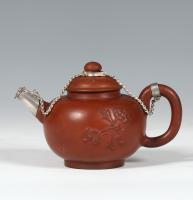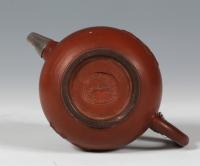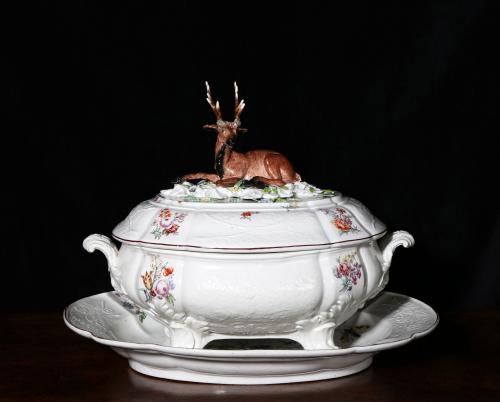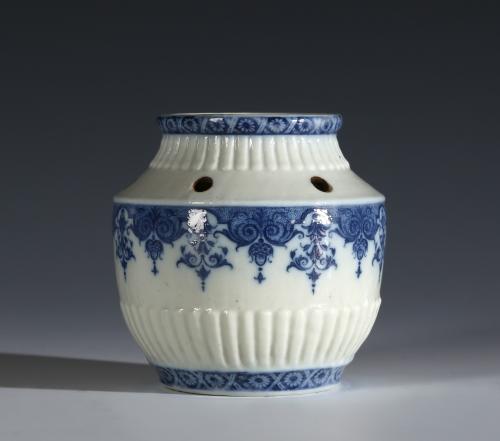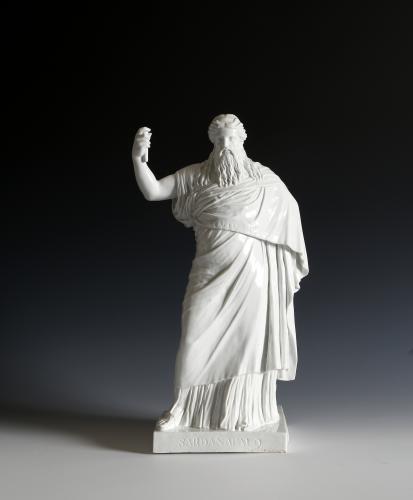
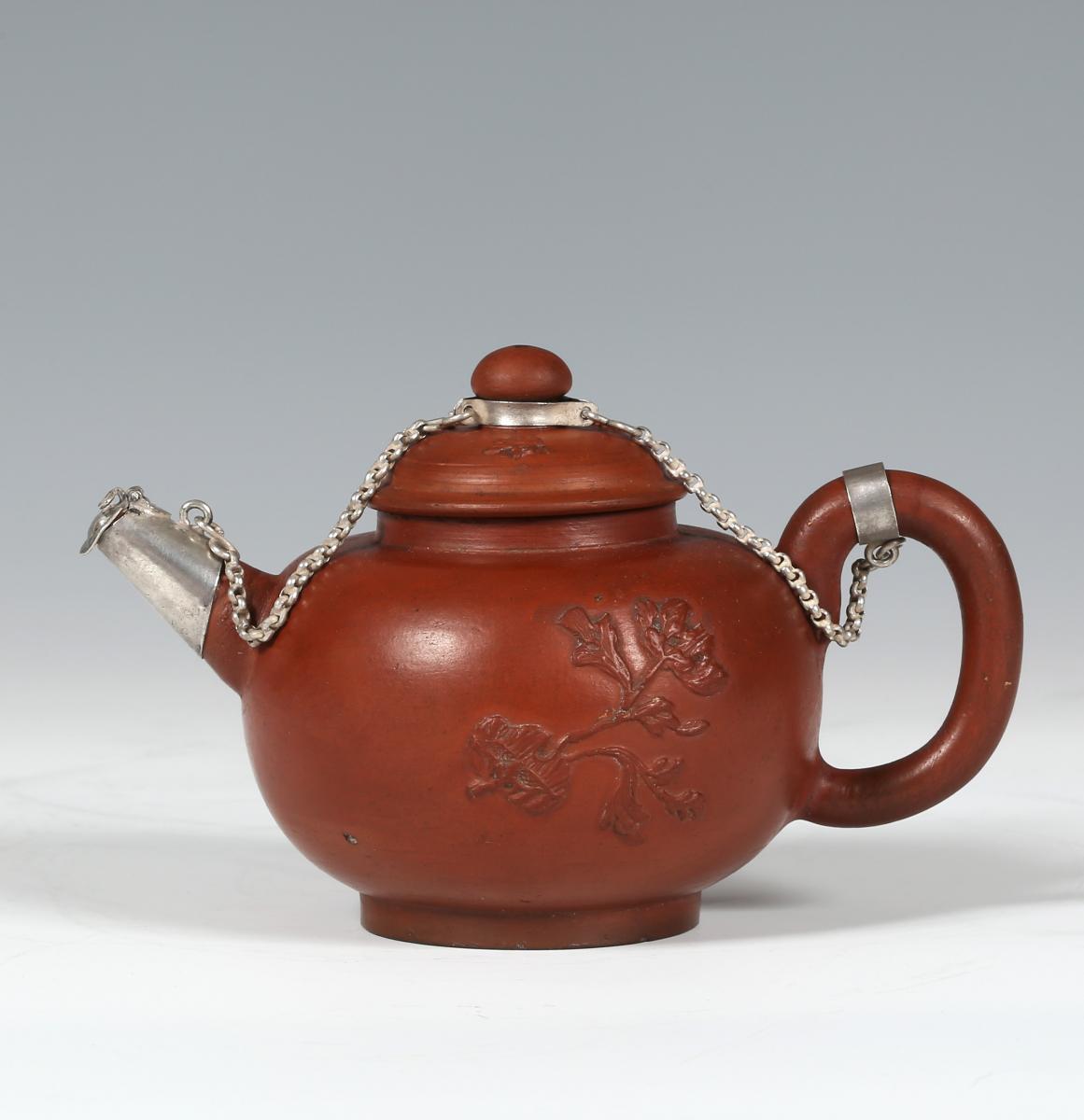
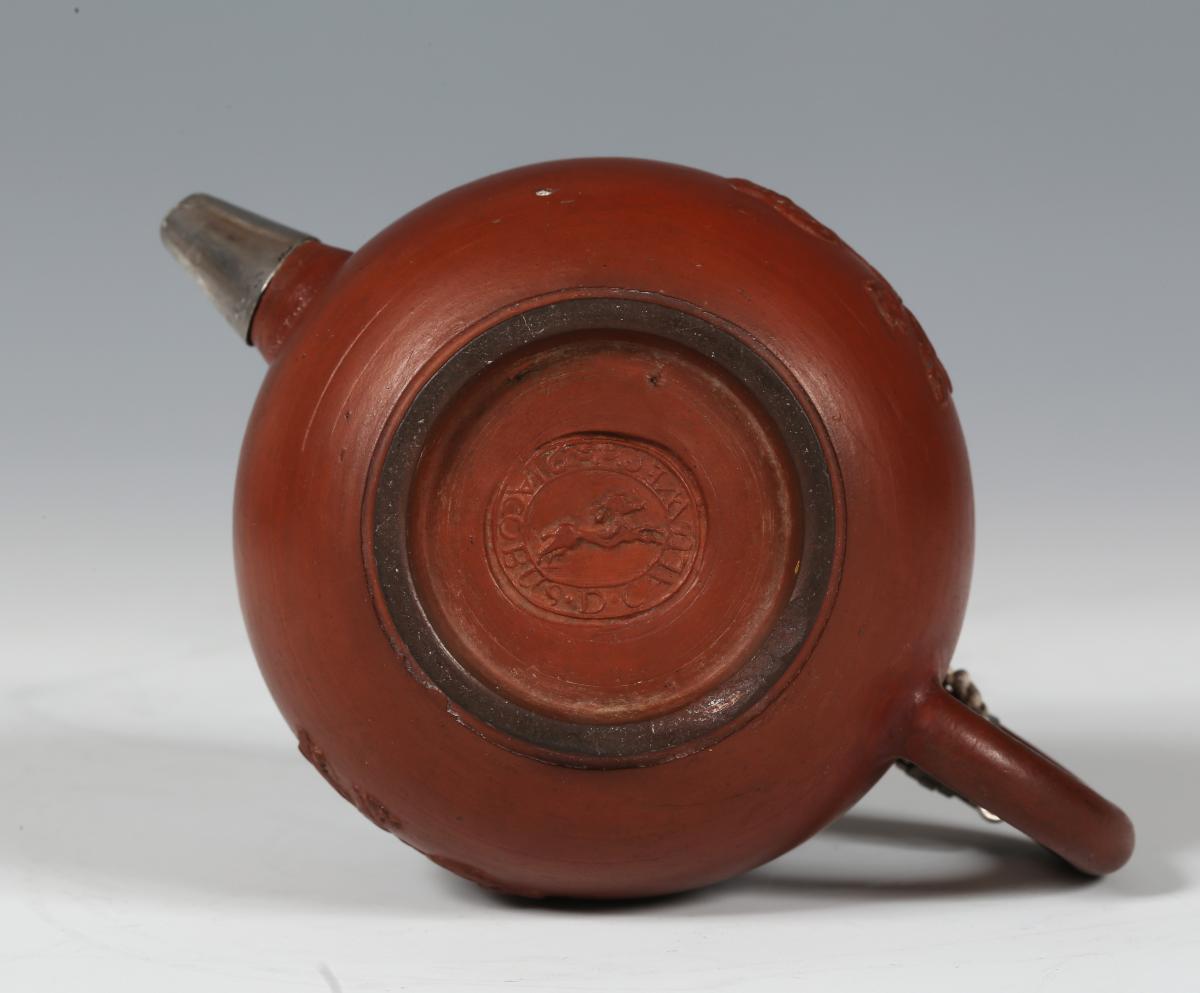
This object is eligible for a Certificate of BADA Provenance
The BADA Standard
- Since 1918, BADA has been the leading association for the antiques and fine art trade
- Members are elected for their knowledge, integrity and quality of stock
- Our clients are protected by BADA’s code of conduct
- Our dealers’ membership is reviewed and renewed annually
- Bada.org is a non-profit site: clients deal directly with members and they pay no hidden fees
Circa 1702 – 1730
Impressed oval mark of ‘JACOBUS.D.CALUWE’ around a running dog or fox.
The fashion for tea brought with it the high-fired red stoneware Chinese teapots of Yixing which became prized possessions and the Dutch potters were naturally keen to make their versions.
The first and most prolific Dutch potter to succeed in their manufacture was Ary de Milde who is recorded working from 1678 until his death in 1708; his family continued his pottery, ‘De Gecroonde Theepot’, until 1724. The biggest producer after de Milde was Jacobus de Caluwe.
De Caluwe teapots are slightly softer and more porous than those of Ary de Milde, and their colour is typically a slightly lighter orange-red. A few rare glazed examples are known which suggests that he had trouble making them impervious to liquid.
In 1702 De Caluwe bought part of the building of the pottery of ‘De Distel’ and was already described as a teapot maker. De Caluwe continued until his death in 1730. He was the last of the Dutch redware teapot makers.
Dutch redware teapots differ from Chinese Yixing ones in being softer and lower fired and are nearly always wheel thrown whereas Yixing ones are generally slab built. It is sometimes said that these small teapots were used for sampling teas.
References:
Kristin Duysters, Theepotten Steengoed, Roodstenem Theepoten uit Yixing en Europa, (Arnhem 1998)
Dimensions
9.2 cm highCondition report
No damage or restorationThe BADA Standard
- Since 1918, BADA has been the leading association for the antiques and fine art trade
- Members are elected for their knowledge, integrity and quality of stock
- Our clients are protected by BADA’s code of conduct
- Our dealers’ membership is reviewed and renewed annually
- Bada.org is a non-profit site: clients deal directly with members and they pay no hidden fees


